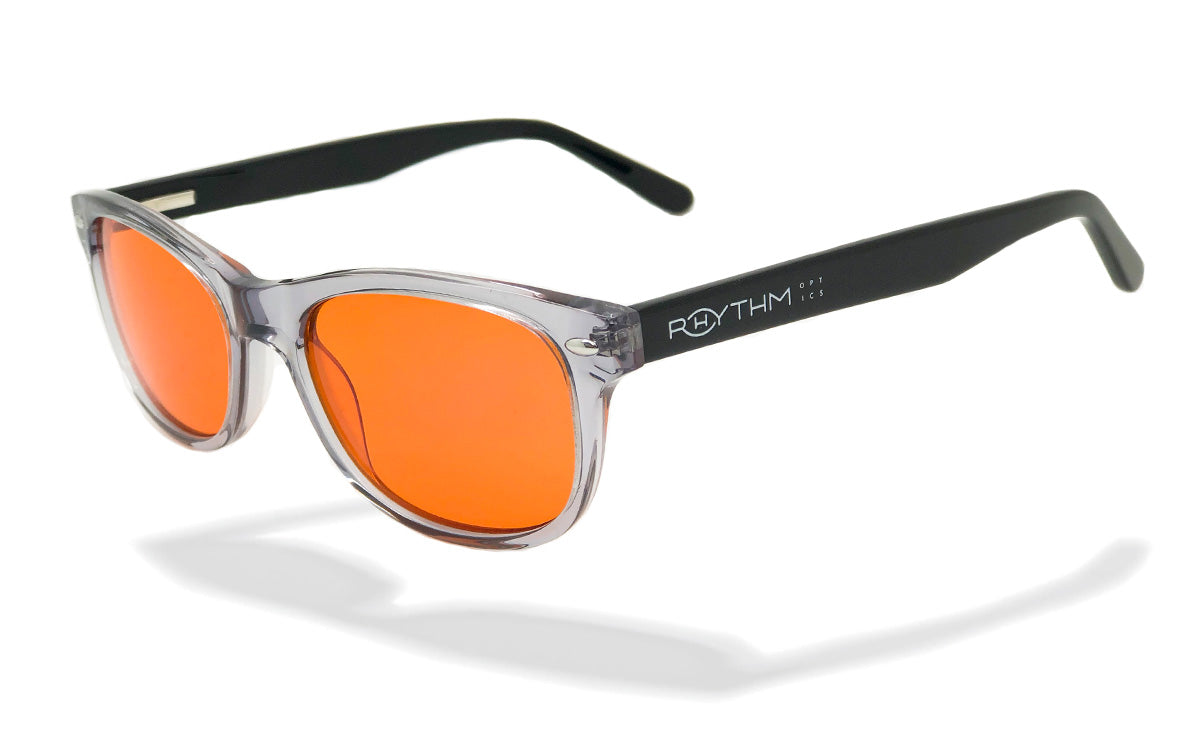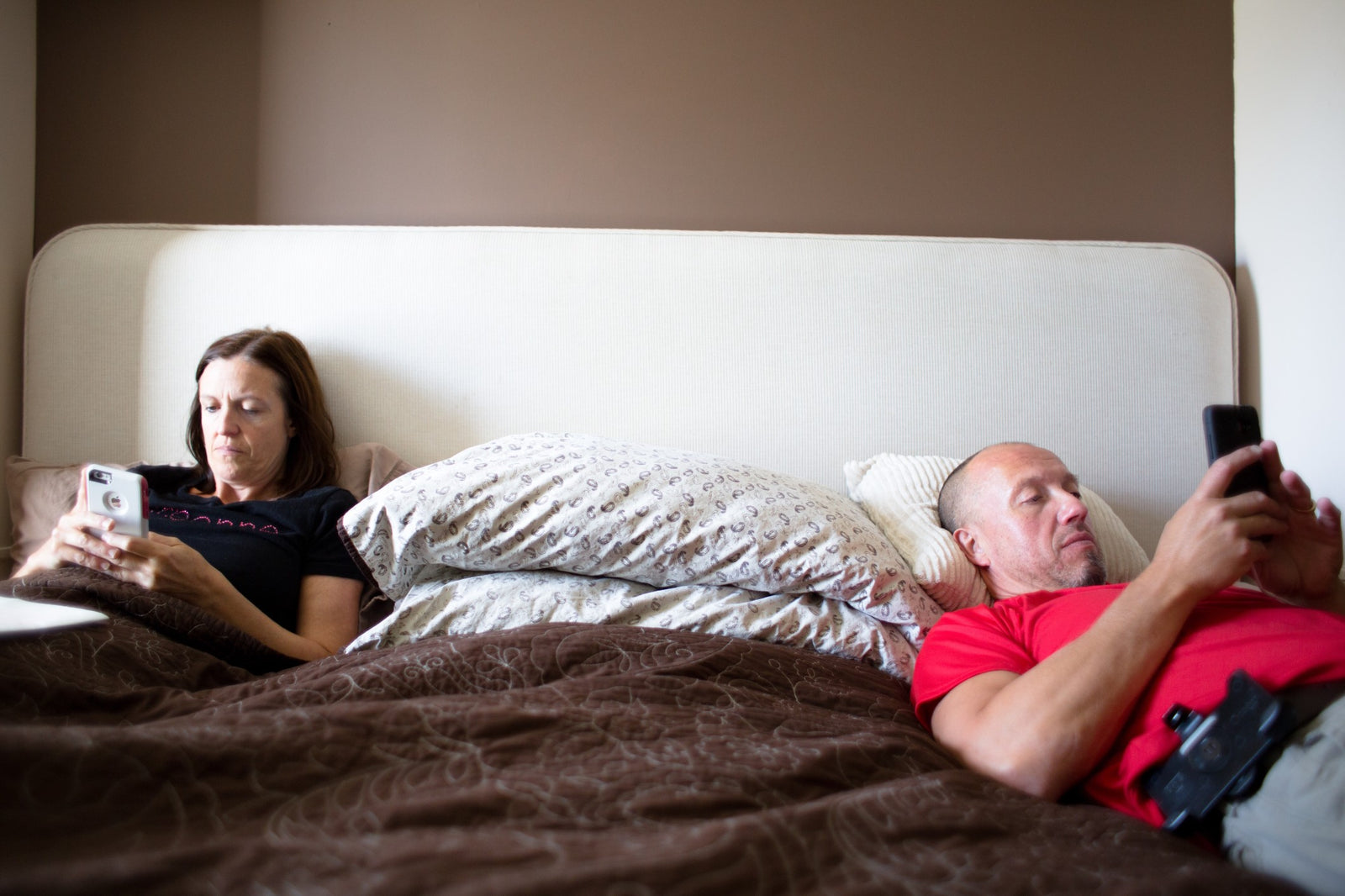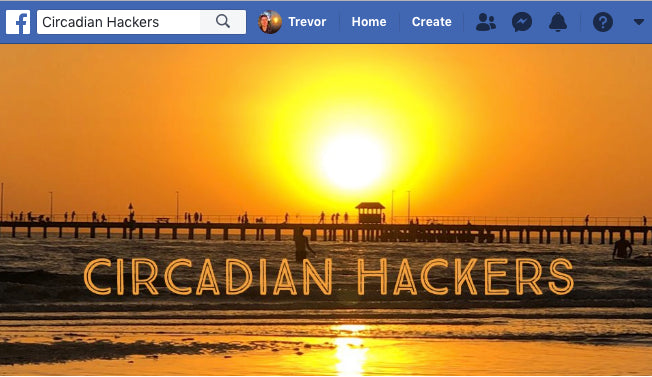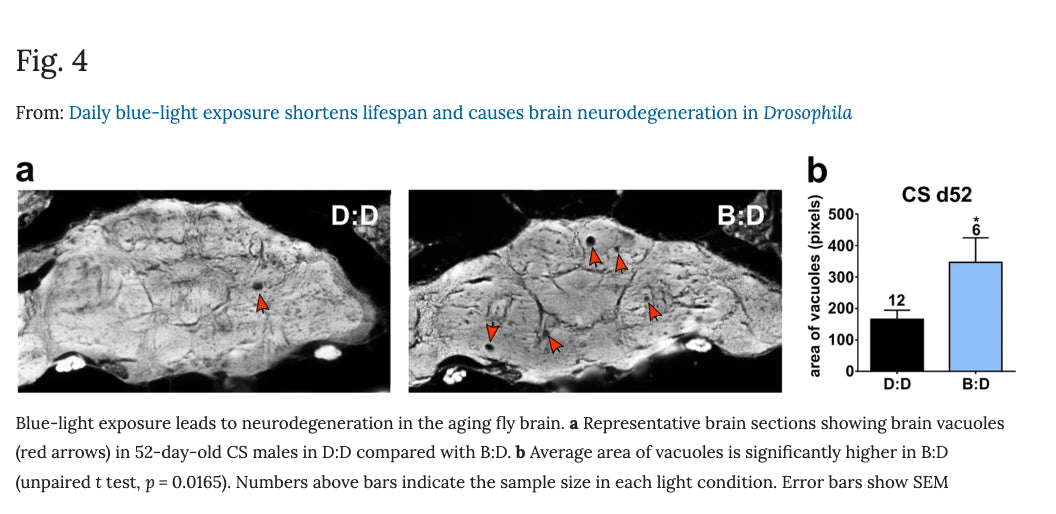
Are you confused by all the different glasses out there all claiming to be blue blockers?
You may have noticed "influencers" wearing clear “blue blockers” telling you they protect their eyes from screens and help their circadian rhythm.
Perhaps you are trying to understand why on earth you’d wear ones with yellow, orange or red coloured lenses when you can have way less weird clear ones instead.
Maybe your optometrist has told you they can just add blue blocking to your regular glasses. You may even follow a Doctor on social media who is suggesting blue blockers (with clear lenses) will help your hormones, melatonin and circadian rhythm...
After reading this article you’ll know how different lenses work and why they are not one and the same. I’ll clear up the misinformation out there. Some of it is spread innocently by influencers who don’t really know what they’re talking about but happily take products or payments for posts…But sometimes it’s people with authority like Doctors making false claims about eyewear when they don’t actually understand the biophysics of light or circadian biology. Some of it is misleading marketing from brands that deliberately use deceptive or vague language and measurements to make you think a product does something it actually does not.
Lenses and glasses are solutions. And before you can really understand any solution, first you must understand the problem they solve.
Artificial blue light presents 2 major problems.
- It can cause real physical damage and death to the cells in our retina and even contribute to Aged Macular Degeneration which can lead to blindness.
- It can cause disruption of our circadian rhythm, known to lead to many serious diseases and disorders.
While they are both bad problems, it turns out they are 2 very different and separate problems, and they are caused by very different wavelengths of light. And if you haven't guessed yet, require 2 very different solutions!
About Blue Light
Light is made up of electromagnetic particles that travel in waves. These waves emit energy, and range in length and strength. The length of the waves is measured in nanometers (nm). A nanometer is one billionth of a meter. Some wavelengths are visible to the human eye, and some are invisible.
Blue light is a colour in the visible light spectrum, along with green, yellow, orange and red. Blue light in general is defined as visible light ranging from 380 to 500 nm.
Blue light can be further broken down into two segments of blue-violet light of roughly 380 to 450 nm, and blue-turquoise light of roughly 450 to 500 nm. (Keep this point in mind when we dig into misleading marketing)
The lower the nm figure, the higher the energy of the wavelength. For perspective, it goes from gamma rays, to X-rays, then ultraviolet (UV) rays which sit to one side of the visible light spectrum, then - Violet, Blue, Green, Yellow, Red complete the visible light spectrum, followed by...infrared light, micro waves and radio waves. Together these wavelengths make up the electromagnetic spectrum. Now remember, your Radiologist is hiding behind a Led wall wearing a Led vest to protect themselves from X-rays...and violet/blue light rays are the closest visible wavelengths to that!
The shorter the wavelength; the higher the energy. Blue light is the shortest in the visible spectrum and of the highest energy. In the lower half of its range (380-450nm) it is known for causing physical eye damage such as macular degeneration.
It is these high energy, short wavelengths in the blue-violet range of up to 450nm that are responsible for physical damage to the eye. The damage is done by the strength and power of the wavelengths of light causing production of Reactive Oxygen Species (ROS). This is well researched and published in scientific literature. A study has shown 449nm blue-violet light to produce 3x ROS than darkness, while ROS from 470nm blue-turquoise light was barely different to darkness.

That is Problem #1… High energy, short wavelength blue-violet light under 450nm damages retina cells.
Problem #2 is longer wavelength blue-turquoise light peaking at 480nm prevents release of Melatonin hormone causing Circadian Disruption.
How do our eyes interact with light and dark?
Here’s how. There are non-visual photoreceptors in our eye are known as intrinsically photosensitive retinal ganglion cells (ipRGCs) which contain melanopsin, a light sensitive protein. This acts like a “light sensor” detecting wavelengths of light in order to interpret the length of day and length of night informing the suprachiasmatic nucleus (SCN) which is the circadian pacemaker of the brain. Its job is to synchronize the timing of many metabolic functions throughout our body.
The melanopsin containing ipRGS’s regulate the suppression of, and the release of the hormone melatonin from the pineal gland. Most literature concurs with melanopsin peak sensitivity of the receptor being in the 460-484nm range[2]. This is squarely in the Blue-turquoise band of blue light. Some research[15] has shown 460nm having twice the melatonin suppression of longer wavelength 555nm green light. There are also studies showing shorter wavelength 445nm blue-violet light having half the suppression of 480nm Blue-turquoise light.
What that means is blue-violet 380-450nm light has little influence on circadian rhythm and blue-turquoise 450-500nm light has the most significant influence on circadian rhythm.

It should be said also that as that 480nm peak curve tails off down to 555nm green light there is a progressively diminishing effect of light on circadian rhythm.
Taking all this onboard, it would suggest that clear “blue blockers” aren’t really blocking blue light at all. They only filter a small portion of blue-violet light only. This may be enough to take the edge off screen use, giving some relief from digital eye strain. They are suitable for use during the day only. And they will have no noticeable bearing on melatonin and circadian rhythm.
Clear lensed “blue blockers” should really be referred to differently. Perhaps as blue light filtering glasses, or anti-blue light glasses, or computer glasses… These are also the ones with the most confusion behind them. With 1000’s of instagrammers sharing selfies in these a day after getting them while talking about how they help their circadian rhythm it’s no wonder! It seems they’ve heard a little bit about blue light. They’ve heard blue light has something to do with circadian rhythm, and apparently their new glasses block some blue light. So of course the help their circadian rhythm, right?.... Wrong!
I’m sure for some this is innocent enough. Others do so because they are incentivised to by the manufacturers. But there are also many who should (and perhaps do) know better. I’ve seen doctors, some who supposedly specialize in hormones, promoting clear glasses as helping with circadian rhythm. Yet the biophysics of light make this impossible. But because they know about hormones, and melatonin is a hormone, and melatonin factors in circadian rhythm, they figure they must be right. But they have zero knowledge about the biophysics of light… These doctors are paid by the brand to be ambassadors and make these comments and posts for profit. I don’t know if they don’t know the truth, or just don’t care what the truth is. Either way, don’t believe them.
Sometimes it’s actually the brands themselves doing the misleading. A common trick they will use is to mention a percentage of blue light blocked. Read these 2 sentences:
- Blocks 59% of blue light.
- Blocks 59% of harmful blue light.
Is there a difference? You bet. Blue light is blue light. 380-500nm. But what is “harmful” blue light? That is open to their own interpretation… It is not really a measure. It is subjective. If you don’t ask what they consider to be “harmful blue light” then it’s 59% of who knows what.
It is probably that they are only referring to the blue-violet 380-450nm light that causes cell damage, or some self determined point within that range. Not the circadian disrupting 450-500nm blue light. Some of these brands even refer to that as “good blue light”!
Clear computer glasses are ok, as long as you know what they do, and what they don’t do. They take the edge off and reduce eye strain.
If you really want to protect your eyes from cellular damage, you need to block out up to 450nm. That can only be achieved with a yellow tinted lens.
If you want to sleep better you need to block out the wavelengths that suppress melatonin. That can only be achieved with an orange-red lens.
Timing and context matter. The right lens, at the right time, in the right place. As shown below, Rhythm Optics is the only eyewear with all 4 bases covered.

RhythmCLR lens: Your work environment has pretty good natural lighting, but you’re on screens during the day, you need to work accurately with colours, and maybe you don’t want to look weird in the office! No one will even know you’re filtering out the spike of blue light from your screens and reducing digital eye strain.

Rhythm450 lens: You work in a blue-lit hell hole! Fluorescents overhead, screens galore, you’ve been on the computer a l l d a y. 💻 It’s late afternoon and home time is still a long way off. You know this environment is bad for your biology-and you know these wavelengths of light cause irreversible cellular damage to your eyes. You put this above what anybody else thinks and will proudly biohack your shitty workplace to stay optimal.

Rhythm500 lens: After the sun sets you know full well artificial light is going to mess with your circadian rhythm. 🌄You know the damage this causes to your mitochondrial function and the chronic diseases that that can lead to. But you’ve still got stuff to do around the house and online, and you might have to go out for a bit. You want to block 100% of the disruptive blue light wavelengths. You know this will allow a good dose of melatonin to release into your system and your in for a good nights restorative sleep.

Rhythm560 lens: You are a hardcore bio hacker, maybe a recovering insomniac. Either way, you make no compromise about blocking blue and virtually all green light at night. You are seeking maximum melatonin production and are happy to sit there and fall asleep 😴 in your chair! You know this is bang for buck one of the best things you can do for your health, and it takes zero effort! How hard is it to just put on a pair of glasses right?🤷♂️
Having the right day pair, and the right night pair for YOU is important. If you’d like help figuring that out just ask!
-------------------------------------------------------------------------------------
Jiyoung Moon, Jieun Yun, Yeo Dae Yoon, Sang-Il Park, Young-Jun Seo, Won-Sang Park, Hye Yong Chu, Keun Hong Park, Myung Yeol Lee, Chang Woo Lee, Soo Jin Oh, Young-Shin Kwak, Young Pyo Jang, Jong Soon Kang;Blue light effect on retinal pigment epithelial cells by display devices,Integrative Biology, Volume 9, Issue 5, 1 May 2017, Pages 436–443, https://doi.org/10.1039/c7ib00032d
https://academic.oup.com/ib/article/9/5/436/5115388
Enezi J, Revell V, Brown T, Wynne J, Schlangen L, Lucas R (August 2011). "A "melanopic" spectral efficiency function predicts the sensitivity of melanopsin photoreceptors to polychromatic lights". Journal of Biological Rhythms. 26 (4): 314–23. doi:10.1177/0748730411409719. PMID 21775290.
Lockley SW, Brainard GC, Czeisler CA (September 2003). "High sensitivity of the human circadian melatonin rhythm to resetting by short wavelength light". The Journal of Clinical Endocrinology and Metabolism. 88 (9): 4502–5. doi:10.1210/jc.2003-030570. PMID 12970330





